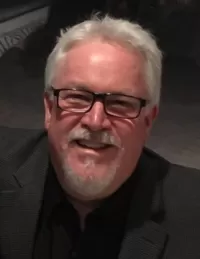Breaking Bad: A Lesson in Creativity For the Workplace
On the heels of the series finale of Breaking Bad, I heard a radio interview on NPR’s show “Fresh Air.” The host was interviewing Peter Gould and Thomas Schnauz, part of the writing team for the hit series - a series hailed by many as the best drama ever written for television. Across five seasons and 62 episodes the creators of the show delivered compelling story elements and characters that produced a cult following and, in my opinion as a viewer, a phenomenon no other series has achieved—not a single bad episode! How could a team such as this, with the pressure of continuing to deliver season after season, accomplish such an amazing feat? By reducing punishment for ideas, and instead reinforcing and building on them to see where the idea may lead them.
At the end of the interview, the host asked Gould and Schnauz whether the writers’ room was like typical ones: where “people are not nice to each other and people are really…kind of nasty in the way they reject each other’s ideas.” Schnauz’ response taps into what many organizations who fail to generate creativity from their employees should understand:
“It was what we would call a safe room, where we could say any dumb thing and not feel bad about it, because that's really the best way to work. I mean, if you feel like you're going to be criticized for something you say, then you're not going to say anything. You're going to shut up. And you've got to be free to say any dumb thing, because a lot of times when you say something stupid, a good idea arises from it.”
But every idea can’t be a great one in the creative process, so how did they handle situations where an idea seemed weak or problematic? The following is how Gould and Schnauz described the interaction of the writers with Vince Gilligan (the series creator and the head of the writing team:
SCHNAUZ: So probably the best way Vince would reject an idea would be he'd kind of look at you and say, "Oh, that's interesting."
GOULD: I like the way you're thinking.
SCHNAUZ: Yeah, I like the way you're thinking.
GOULD: Although sometimes it was tricky, because sometimes he really did like the way you were thinking.
SCHNAUZ: Yeah. You had to sort of interpret it.
GOULD: Yeah. It reminds me a little bit of the way they teach improv comedians at places like "Second City," where instead of trying to negate what the other person is saying, you try to build on it. And that is ultimately why it's so much fun. Because, you know, you build on each idea, and then you come up with a run of thoughts. And then, at that point, maybe it just kind of ends, and then you move on and you find something else that you like better. But it's really a sophisticated form of play. And it's—I just miss the hell out of it, I've got to say.
Take a page from those who did it best, Mr. or Ms. Manager. If you want to create an environment that promotes creativity, practice the behavioral process used in “Breaking Bad”—dial back the criticism that could punish idea generation, and dial up the positive reinforcement to get more ideas. Now that’s how to get things cooking!



